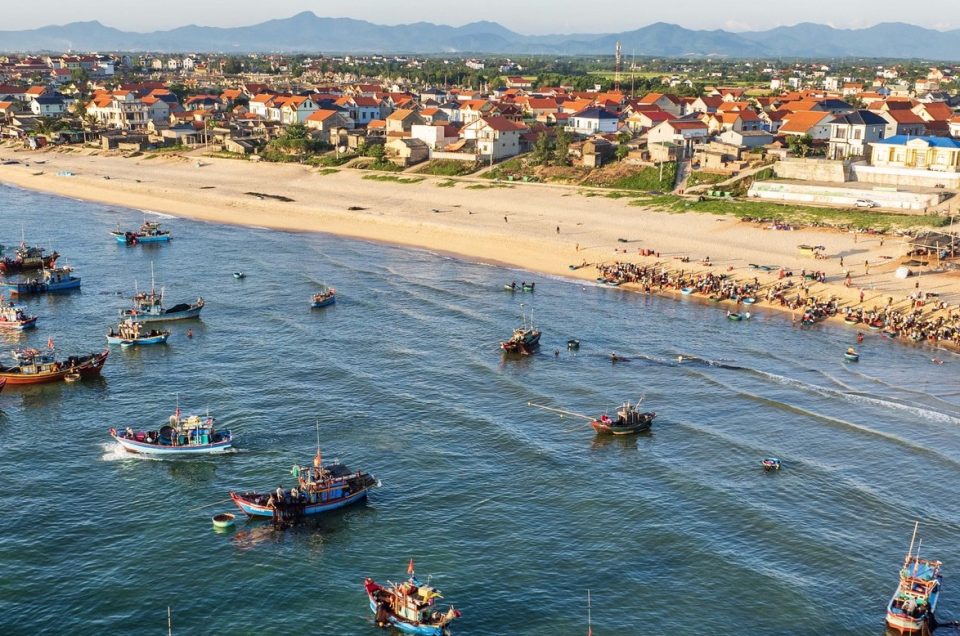Coastal markets
Along the coasts of Vietnam, wherever fishermen are living off the trade of casting nets, there are seafood markets. To explore the coastal culture, tourists should visit these seaside markets, especially in the early morning when the boats return bearing bountiful catches of fish and shrimp.

When I visit the coast, I often wake up very early and ask the locals for directions to the fish market. Laden with the salty aroma of the sea, the cool morning breeze is nature’s gift to start the day. Only by being near the ocean can one feel that precious sense of freedom.

As I approach the market, bustling sounds echo from afar, gradually growing louder. These are the sounds of people’s lives in this sandy coastal region. Fish and seafood markets typically gather right by the water’s edge from the crack of dawn. With baskets or shoulder poles in hand, the women chat and laugh, but their eyes are always fixed on the sea, watching for boats about to dock. In coastal areas where fishermen only go out for the day, the seafood is still fresh without being iced. As a boat nears the shore, the locals wade into the water, sometimes waist-deep, to greet it, skillfully reaching out to help with loads of shrimp, fish, squid, etc… The fishermen have sturdy physiques, tanned skin, and bright “harvest” smiles.

The distinct regional accents are very apparent in these markets. The local dialects, only understood by the natives, may seem unfamiliar to visitors, but one can always sense the powerful yet gentle “soul of the sea” in the people’s voices and laughter. I have strained my ears to listen to conversations in coastal markets in the Central region, like those at Hai Tien (Thanh Hoa), Quynh Luu, Dien Chau, Cua Lo (Nghe An), Dong Hoi (Quang Binh), and Tam Tien (Quang Nam). Although I don’t fully understand the local dialects, I have felt the rhythm of seaside life, seen the hardship of making a living, and learned about the labor practices, daily activities, and trade in each locality.

Depending on the tides and fishing methods, each coastal area and season will yield different types of seafood. If the fishermen go out for the day, they catch near-shore seafood like slipper lobsters, shrimp, crabs, squid, anchovies, red snapper, mullet, and more. Accordingly, the vendors will choose which products to buy, bargain about prices, and then resell, either right on the beach or at larger public markets inland. Some fish sauce makers also come to these fish markets to select fresh ingredients – a prerequisite for producing fragrant, flavorful fish sauces.

In areas with offshore fishing fleets, the catch becomes more diverse, including small fish and large species like tuna, pomfret, and ocean mackerel, etc. After hauling in the nets, the fishermen will sort and ice or freeze the fish on board to preserve its freshness. If you visit Tam Quan fishing port in Binh Dinh, you’ll witness scenes of “fish carrying” when the boats dock. Men and women can be seen shouldering large tuna weighing dozens of kilograms. At the long-standing An Thoi fishing port on Phu Quoc Island (Kien Giang), visitors will be amazed by lively scenes of returning fishing boats laden with abundant seafood, from baskets of anchovies (the raw material for Phu Quoc’s famous fish sauce) to fresh tuna, sharks, and pomfret.





